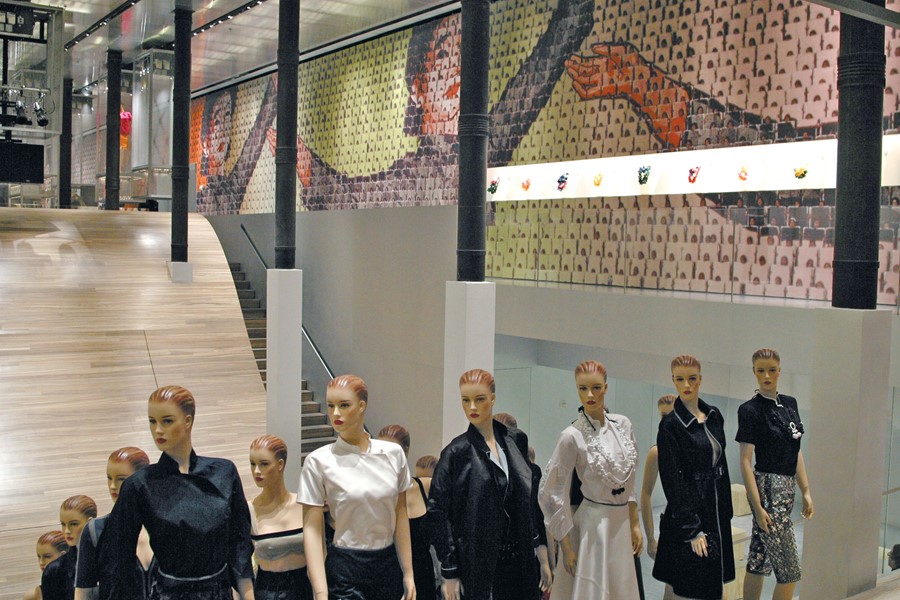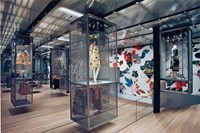As Prada takes to New York to show its Resort 2019 collection, we present a brief history of its SoHo Epicenter, which proposed a whole new way to shop
Over a decade before the opening of Fondazione Prada, the permanent, and public, Milanese home of Miuccia Prada and Patrizio Bertelli’s collection of contemporary art, the house of Prada would open something of a predecessor in New York, the city to which the brand returns to this weekend to showcase its Resort 2019 collection.
This forebear, though, was neither a gallery nor a cultural institution. Rather, it was a store. Built in the footprint of the Guggenheim’s downtown hub, and designed by provocative Dutch architect Rem Koolhaas and his agency-cum-think tank OMA (which would go on to also design the Fondazione) the Prada Epicenter New York, as it was called, was a space closer in sensibility to those one typically consumes artwork in, rather than clothes.
The vast building comprised close to 23,000 feet of floor space, and spanned an entire block, but its interior was near entirely free of clothes. Instead, those who walked through its doors when it opened in 2001 – and those who still do today – are greeted by what Koolhaas called the “Wave” – a 180-foot undulating zebrawood ramp which stretches from street level to basement. Though part of the building’s architecture and function (the opposite bleachers house the latest collection, on an “army” of mannequins) it could just as easily be viewed as a piece of contemporary artwork in itself.
The Epicenter was first born from Mrs Prada’s suspicion that shoppers were getting bored of the typical luxury shopping experience. A series of conversations with Koolhaas would reveal that he concurred. “I tried to inject instability to make a radical space. You never know what you are going to get here,” he said at the time. For him, the Epicenter was a rejection of what he called “the Flagship syndrome” which was, in his words, “a megalomaniac accumulation of the obvious”. The pair would later go on to create the Los Angeles Prada Epicenter together – a vast aluminium box that seems to float above Beverly Hills’ Rodeo Drive.
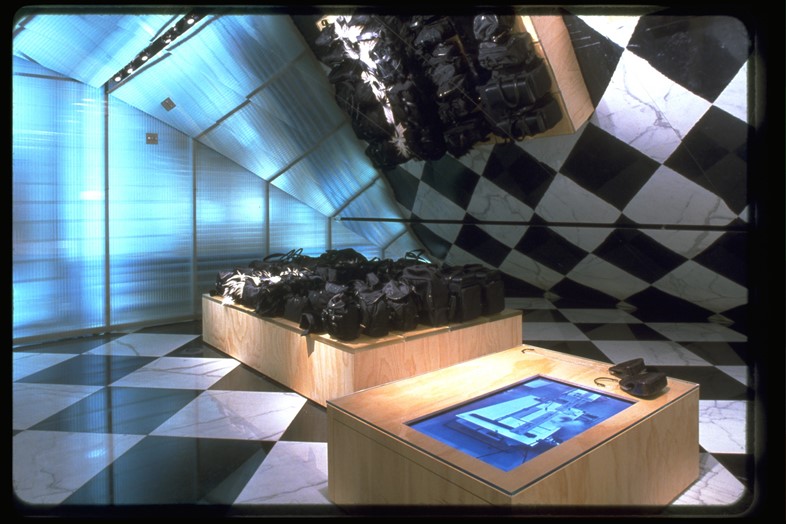
The Epicenter did, and indeed does, make for a shopping experience that is far from obvious. Clothes are secondary to the vastness of the store, displayed in hanging industrial cages, so the less observant shopper might be hard pushed to understand what exactly the space is for. “You know, on my planet, the clothing stores have clothes,” says a bemused Jack Berger to Carrie Bradshaw in an episode of Sex and the City when the then couple visit for an afternoon’s shopping.
The lack of space devoted to product is much to do with Mrs Prada’s desire for disruption, and her consistent desire to face her consumer with the unexpected. As the New York Times wrote at the time, somewhat disparagingly: “It’s as if Mr Koolhaas and Ms Prada decided to thumb their noses at the enterprise of shopping, creating a showroom for clothes that hardly has room to show clothes.”
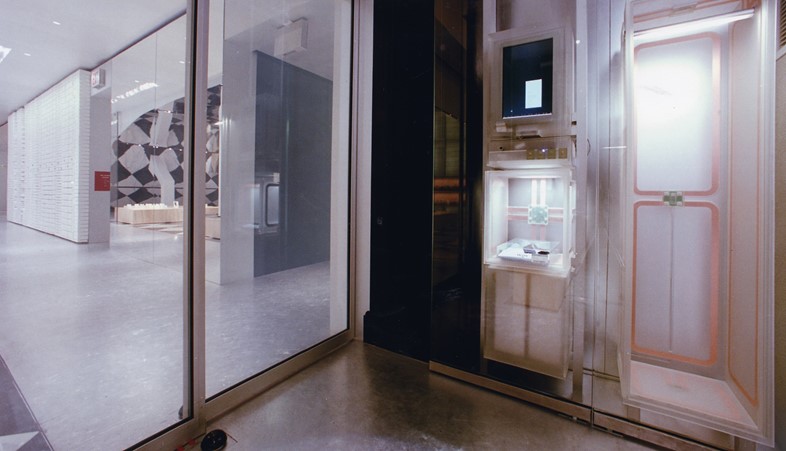
It’s an assesment which seems slightly to miss the point, as at the Epicenter, it is exactly this excess of space which is the luxury. At the time, it made for an entirely new shopping ideal – one we are now increasingly used to, thanks to Mrs Prada’s trailblazing impulse – in which a store’s architecture could provide an experience of pleasure whether or not you might pick up the clothes on display. Instead, the Epicenter is about a momentary immersion into the Prada world, as much appealing to the intellect as to an appetite for consumerism. If you wished, given the way it stretches across a block, you could simply use it as a thoroughfare.
Other, more technical, innovations sat within the store – not least the screens found on the rails as part of its initial design, where shoppers could find out size, style and whether or not a piece was in stock. Antennae tracked pieces going in and out the fitting rooms – themselves fitted with glass that went from clear to opaque at the touch of a button. Walls could be entirely changed depending on the season. Most recently, they echoed the blown-up comic book graphics that lined the walls of the S/S18 show in Milan; when the store opened, screens showed scenes from Italian filmmaker Michelangelo Antonioni’s depiction of existential doubt, Red Desert.
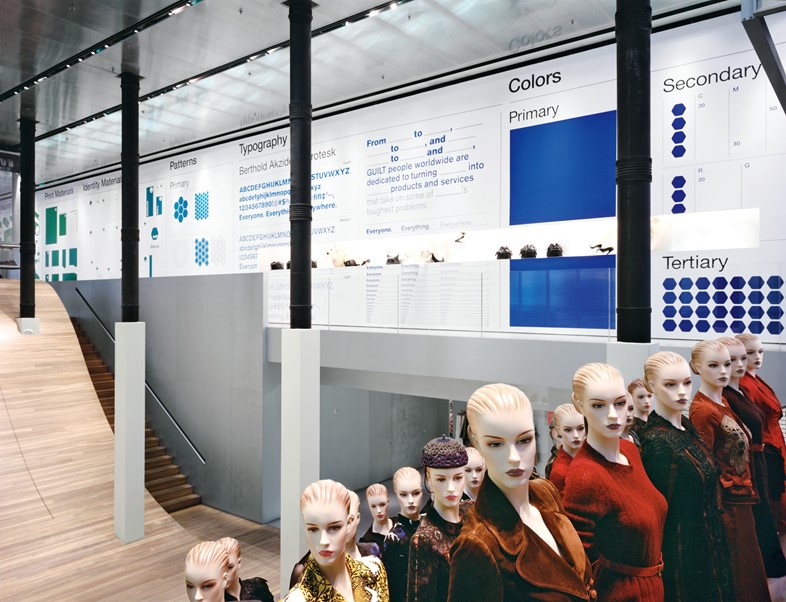
Of course, technology has moved on, as does Prada. But the New York Epicenter, the first of its kind, set an entirely new era for shopping – one in which selling ideas is as important as selling a pair of shoes.
